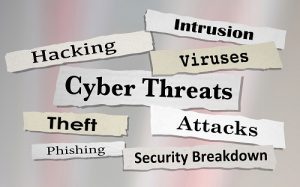 In today's interconnected world, businesses face an ever-evolving threat landscape with cyberattacks becoming increasingly commonplace. The internet, while a gateway to global connectivity, also opens doors to various cyber threats such as ransomware, malware, phishing, and other malicious activities. Despite advancements in cybersecurity technologies, cybercriminals continue to devise new strategies to exploit vulnerabilities and steal sensitive data.
In today's interconnected world, businesses face an ever-evolving threat landscape with cyberattacks becoming increasingly commonplace. The internet, while a gateway to global connectivity, also opens doors to various cyber threats such as ransomware, malware, phishing, and other malicious activities. Despite advancements in cybersecurity technologies, cybercriminals continue to devise new strategies to exploit vulnerabilities and steal sensitive data.
Small businesses, in particular, are at a heightened risk. Statistics show that less than half of small enterprises believe in their ability to ward off cyberattacks. This is concerning, especially when only a little over half provide annual cybersecurity training to their employees. Furthermore, a startlingly low number of small businesses have cyber risk insurance, leaving them exposed to potentially devastating security breaches.
The Impact of Cyberattacks on Businesses
Cybercriminals are not selective; they target businesses of all sizes. A typical attack could involve stealing personal information or planting malicious software to encrypt critical data. These attacks can cripple a business, forcing owners to pay ransoms to regain control of their data.
However, the repercussions of a cyberattack extend beyond immediate financial loss. There are long-term implications such as damage to a company’s reputation, loss of customer trust, potential lawsuits, and compliance penalties. This highlights the importance of not only implementing robust cybersecurity measures but also ensuring swift recovery post-attack.
Comprehensive Cybersecurity: Beyond Prevention
 While preventive measures like firewalls and anti-phishing tools are crucial, they are not foolproof. Businesses must understand the various cybersecurity risks and implement a multi-layered defense strategy. This includes:
While preventive measures like firewalls and anti-phishing tools are crucial, they are not foolproof. Businesses must understand the various cybersecurity risks and implement a multi-layered defense strategy. This includes:
1. Risk Assessment: Understanding the potential cyber risks to data, employees, assets, and systems.
2. Robust Safeguards: Employing essential security measures like firewalls, anti-phishing software, and encryption.
3. Detection Systems: Setting up mechanisms to detect unauthorized cyber activities and system vulnerabilities.
4. Response Protocols: Establishing a rapid response plan for any detected cyber threats.
5. Recovery Strategies: Developing efficient recovery plans to restore operations quickly post-breach.
The Significance of Minimizing Recovery Time
One often-overlooked aspect of cybersecurity is the recovery phase. The reality is, no matter how fortified a system is, breaches can occur. In such instances, the ability to recover swiftly is critical. Companies must focus on reducing downtime from weeks or days to mere seconds. This ability to quickly bounce back not only demonstrates resilience but can also be the difference between a business that thrives post-attack and one that struggles to recover.
What Can You Do?
While prevention is the first line of defense against cyber threats, businesses must not underestimate the importance of rapid recovery strategies. A comprehensive approach to cybersecurity, encompassing prevention, detection, response, and recovery, is vital for businesses to navigate the digital landscape securely and effectively.
Your staff may be overwhelmed with the process of creating a recovery plan, implementing the necessary prevention and detection policies and training your employees. Integrated Technology Systems is here to help. We have the experience to keep your data safe. Regardless of the size of your business, we are here for you. Call us today.
Integrated Technology Systems
6 East 45th Street, Suite 400
New York, NY 10017
212-750-5420
https://www.itsnyc.com



